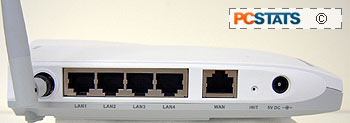
|
Firewalls are a necessity, but configuring them so that every internet-based program still works is often troublesome. With this guide, you can have your Firewall, and MSN File Transfers too.
|
|
|
|
Home >
Reviews >
Beginners Guides >
PCSTATS |
|
|
Home Internet sharing device firewalls
With the proliferation of
broadband Internet, the home Internet sharing device (or router) has become a
common feature in homes with more than one computer system. These networking
devices are installed between your cable or DSL modem and your computers and
almost all include some form of firewall protection to filter the data that
enters your network from the Internet.
There are many, many different
brands of routers out there, but most function in the same essential way. The
firewall can be configured by using a web browser like Internet Explorer to
navigate to the router's built-in IP address (consult your documentation for
this information). The device contains a set of HTTP web pages which can be used
to configure it.
This type of protection is
known as a hardware firewall. A hardware firewall is a separate device that
guards the entrance to a network, not an individual computer. This introduces a
few different factors to configuration, which we will get to in a bit.

(The Gigabyte GN-B49G Wireless Router)
Unlike the two software
firewalls we detailed earlier, hardware firewalls are always active as long as
the device itself is switched on. The only basic configuration necessary is to
network your computers to the device correctly and enter your Internet
connection information. Both of these should be adequately covered by the
documentation, so we will leave the basic setup alone. Hardware firewalls offer
some additional possibilities and complexities that we will cover later in this
article.
Testing your firewall
There are several websites
which will allow you to test the security of your PC for free. They accomplish
this by running a series of software probes against the Internet address that
you give them, searching for vulnerability and weaknesses. This simulates the
use of freely available 'scanning' software like GFI's LanGuard which can be
used to scan hundreds of systems for security holes in a matter of minutes. Any
Internet attached computer can expect to receive several thousand scans like
this during its lifetime.
Now that your PC is protected
by a firewall, let's test its effectiveness by subjecting your system to a few
fake probes.
The following websites will
conduct a vulnerability scan of your system, checking to see whether it is
visible on the Internet and if there are any unguarded avenues of attack. Follow
the directions listed on each site carefully. If you have correctly implemented
your firewall as directed above, you should come out with a clean bill of
health.
Configuring for maximum security
Any firewall product will
provide you with basic security, effectively hiding you from potential Internet
troublemakers. Some applications let you take further precautions to strengthen
your security, though we should note that these settings can cause problems for
certain Internet applications, as the reinforced firewalls prevent them from
working correctly. Let's take a look at some of the options present in our three
sample firewall types.
|
< Previous Page
|
© 2025 PCSTATS.com
Please respect the time and effort that went into creating each PCSTATS Beginners Guide, do not illegally copy. Thank you.
|
Next Page >
|
|

